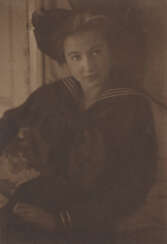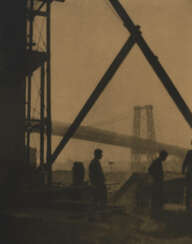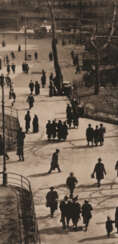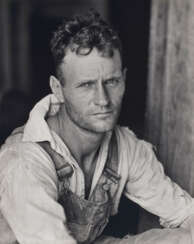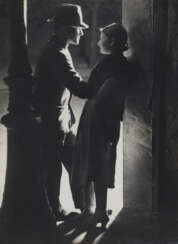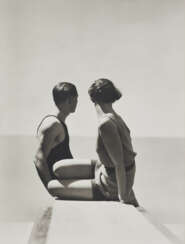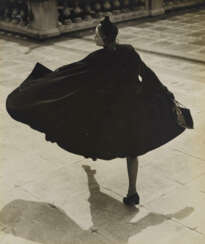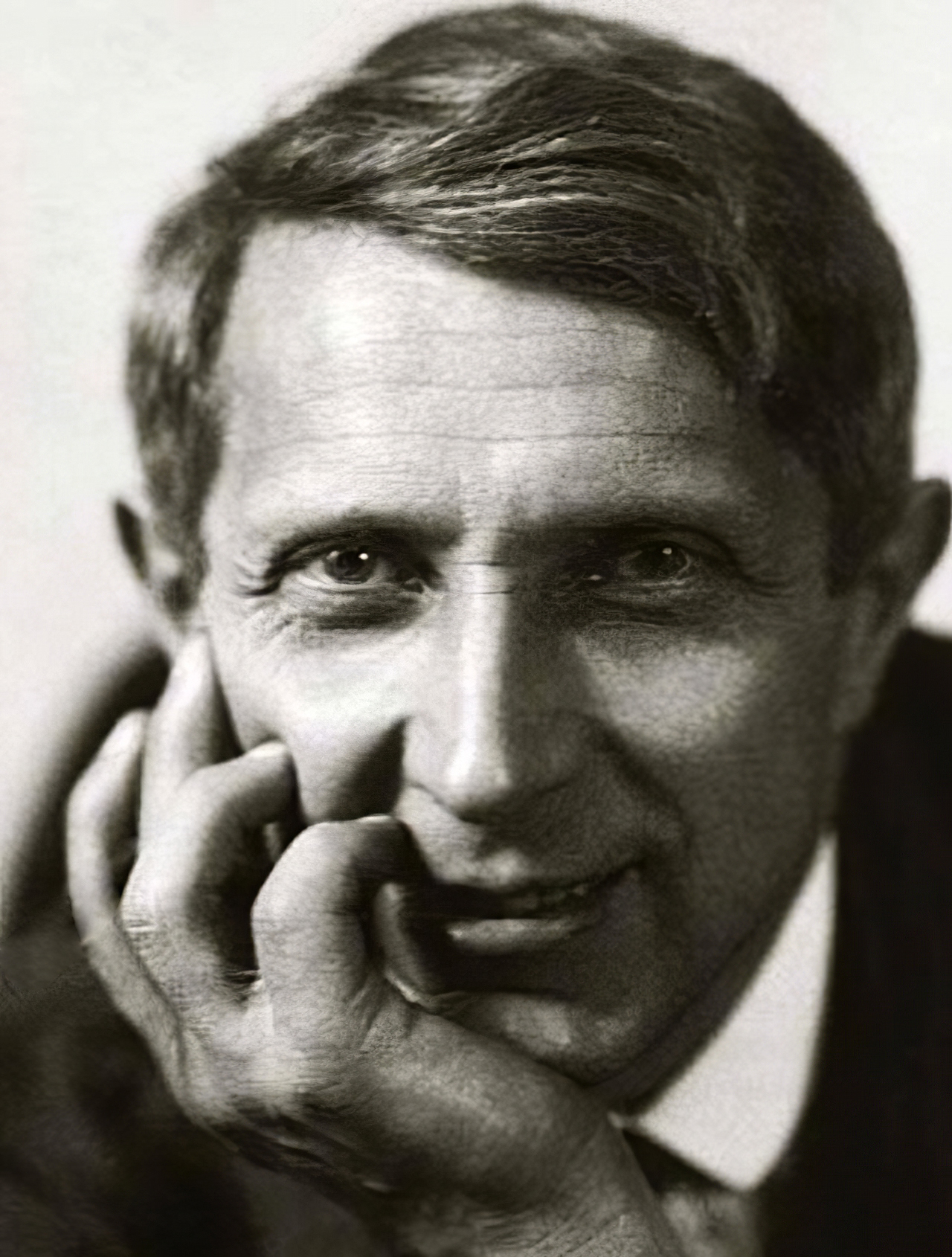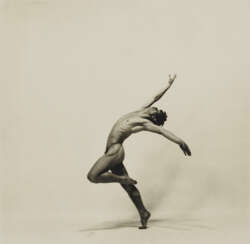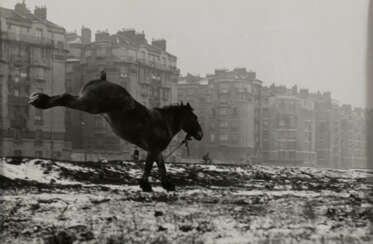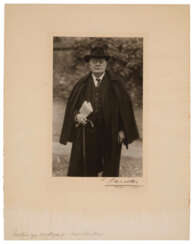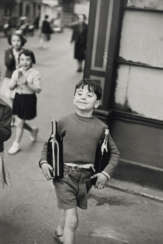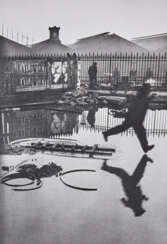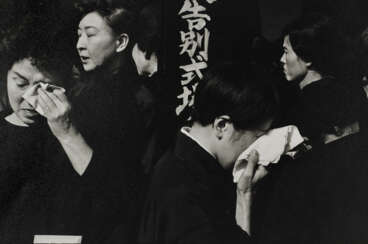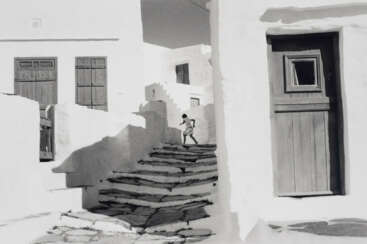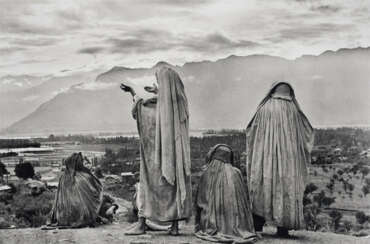
Photographs
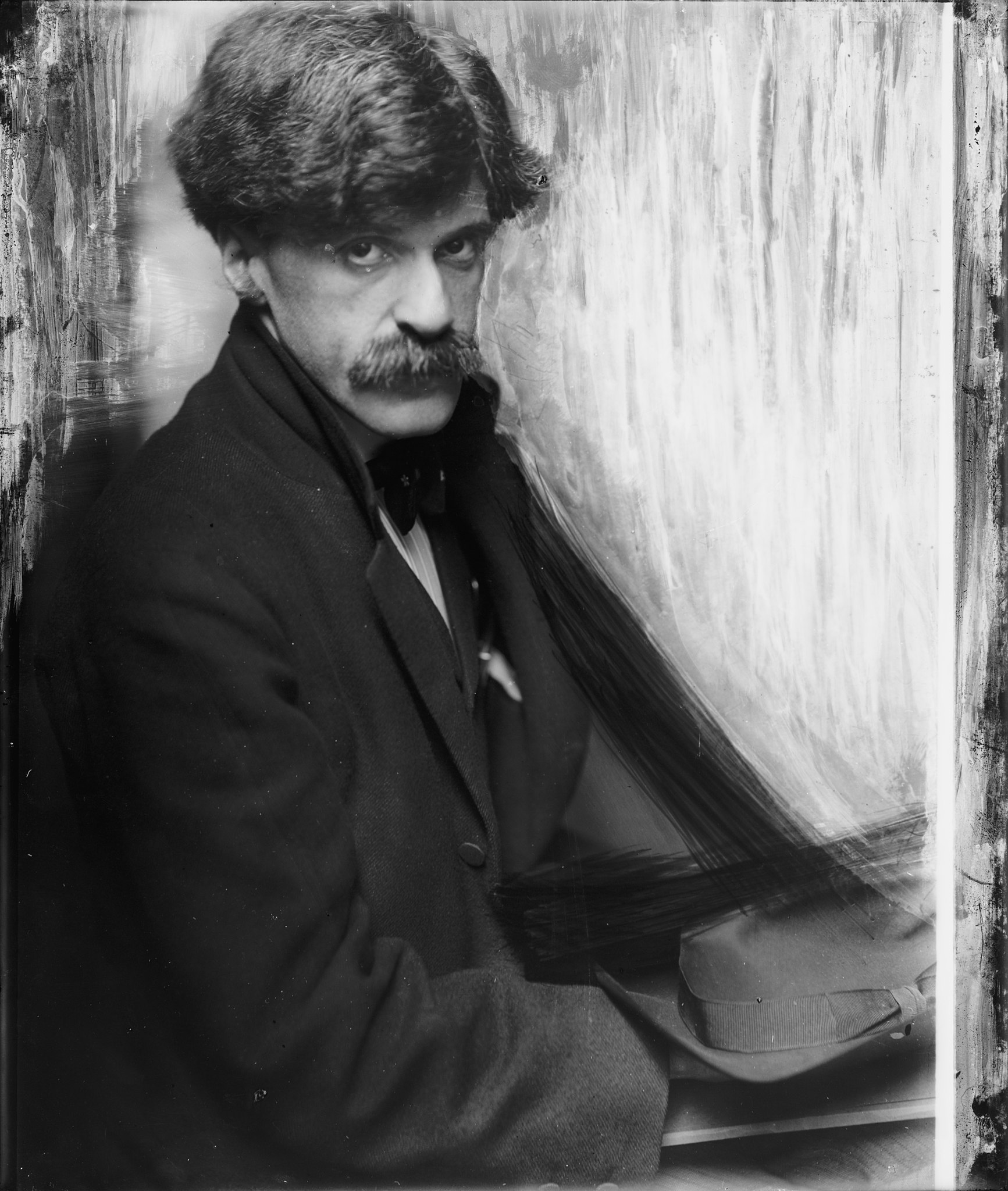
Alfred Stieglitz was an American photographer and modern art promoter who was instrumental over his 50-year career in making photography an accepted art form. In addition to his photography, Stieglitz was known for the New York art galleries that he ran in the early part of the 20th century, where he introduced many avant-garde European artists to the U.S. He was married to painter Georgia O'Keeffe.
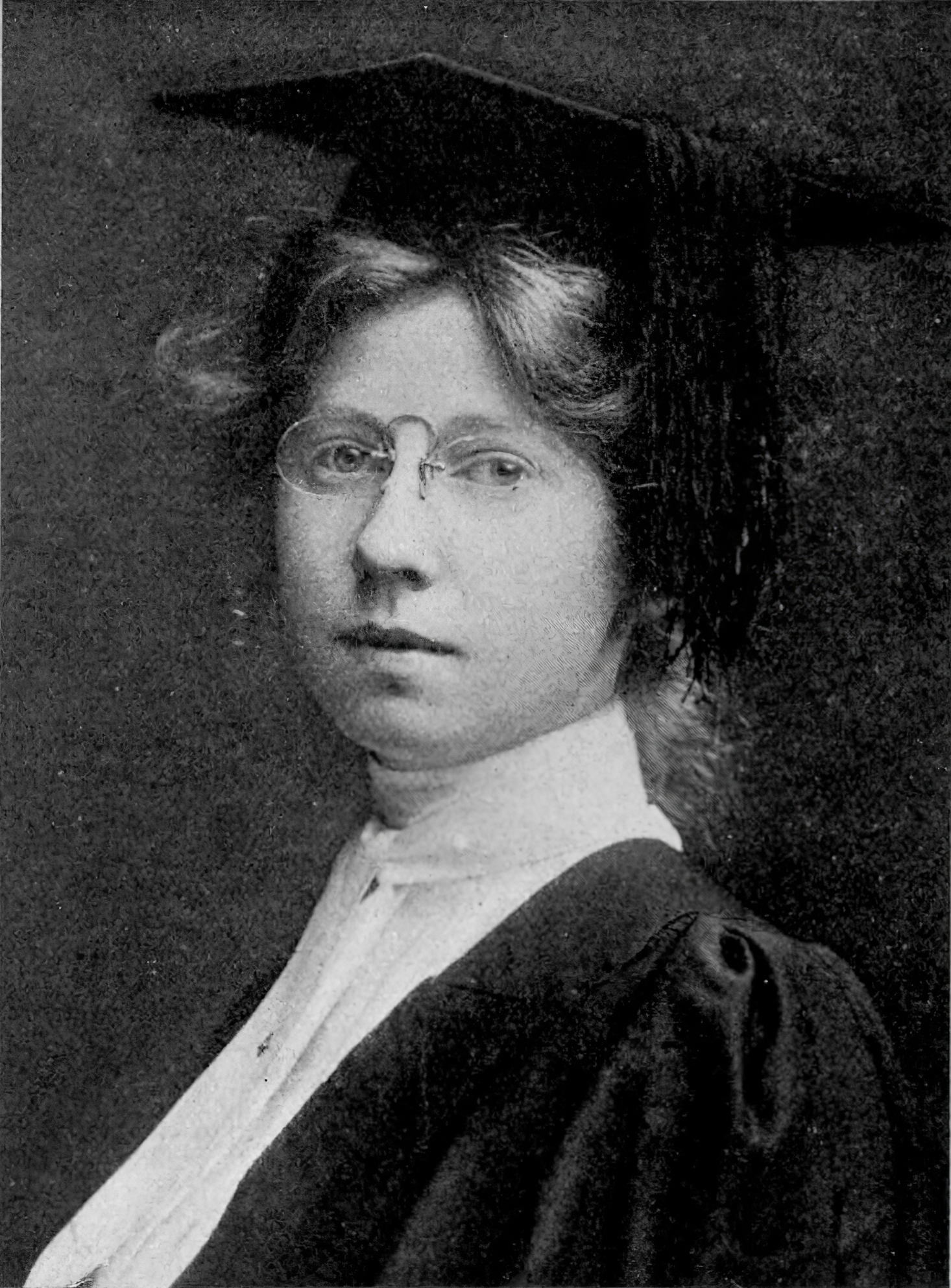
Imogen Cunningham was an American photographer known for her botanical photography, nudes, and industrial landscapes. Cunningham was a member of the California-based Group f/64, known for its dedication to the sharp-focus rendition of simple subjects.

Alfred Stieglitz was an American photographer and modern art promoter who was instrumental over his 50-year career in making photography an accepted art form. In addition to his photography, Stieglitz was known for the New York art galleries that he ran in the early part of the 20th century, where he introduced many avant-garde European artists to the U.S. He was married to painter Georgia O'Keeffe.
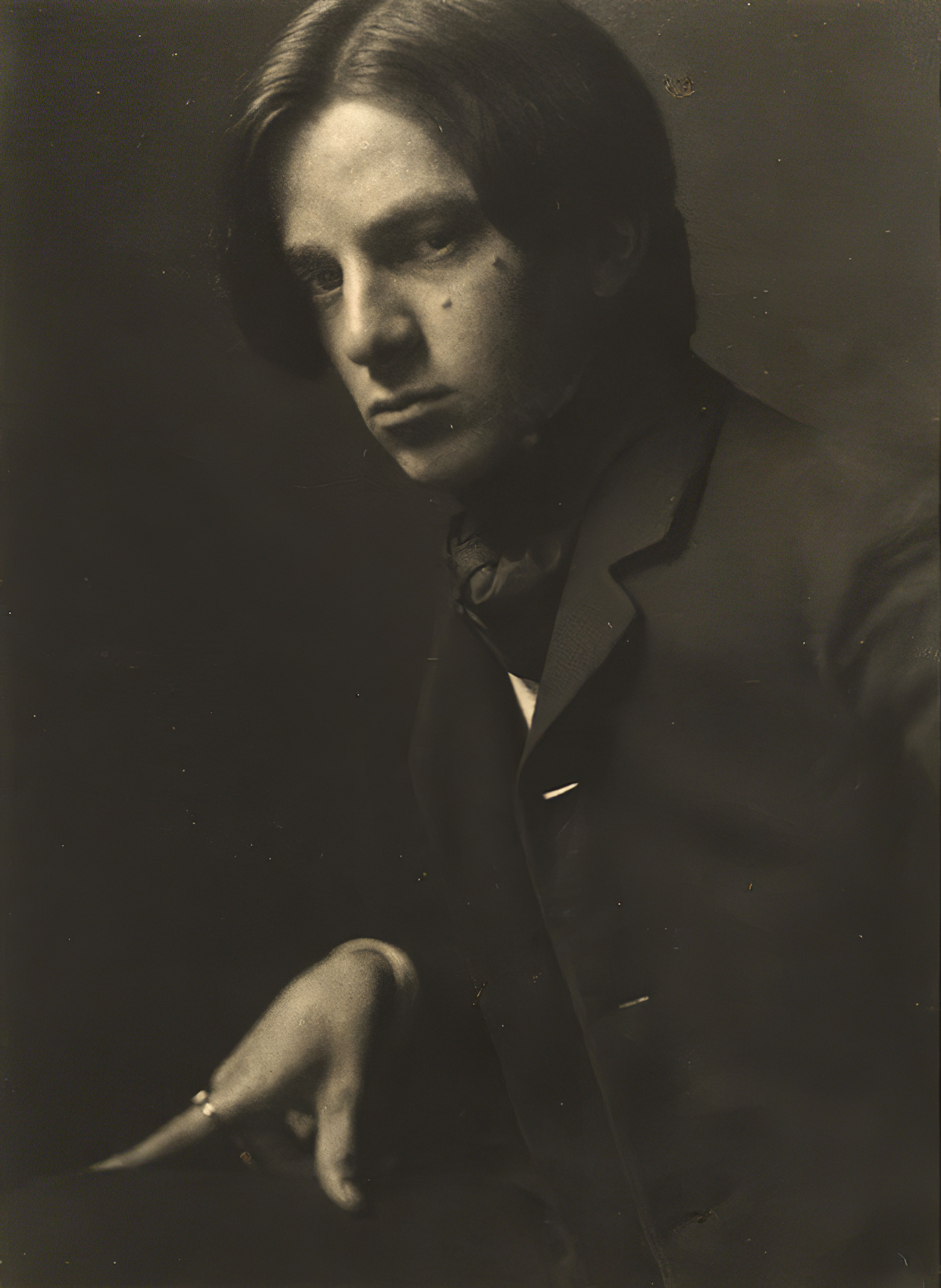
Alvin Langdon Coburn was an American photographer and artist who was best known for his pioneering work in the field of pictorial photography. He was a member of the Photo-Secession movement, which was a group of photographers who sought to elevate photography to the status of fine art.
Coburn was born in Boston, Massachusetts, and grew up in England. He began taking photographs when he was just eight years old and later studied photography in New York City. He went on to become one of the leading photographers of his time, and his work was exhibited widely in Europe and the United States.
Coburn is perhaps best known for his innovative use of the "vortograph," a technique he developed in 1917 that involved photographing objects through a triangular arrangement of mirrors. The resulting images were highly abstract and geometric, and anticipated the work of many later artists, including the Surrealists.
In addition to his work in photography, Coburn was also an accomplished painter and printmaker. He continued to work as an artist throughout his life, and his work is now held in the collections of many major museums around the world.
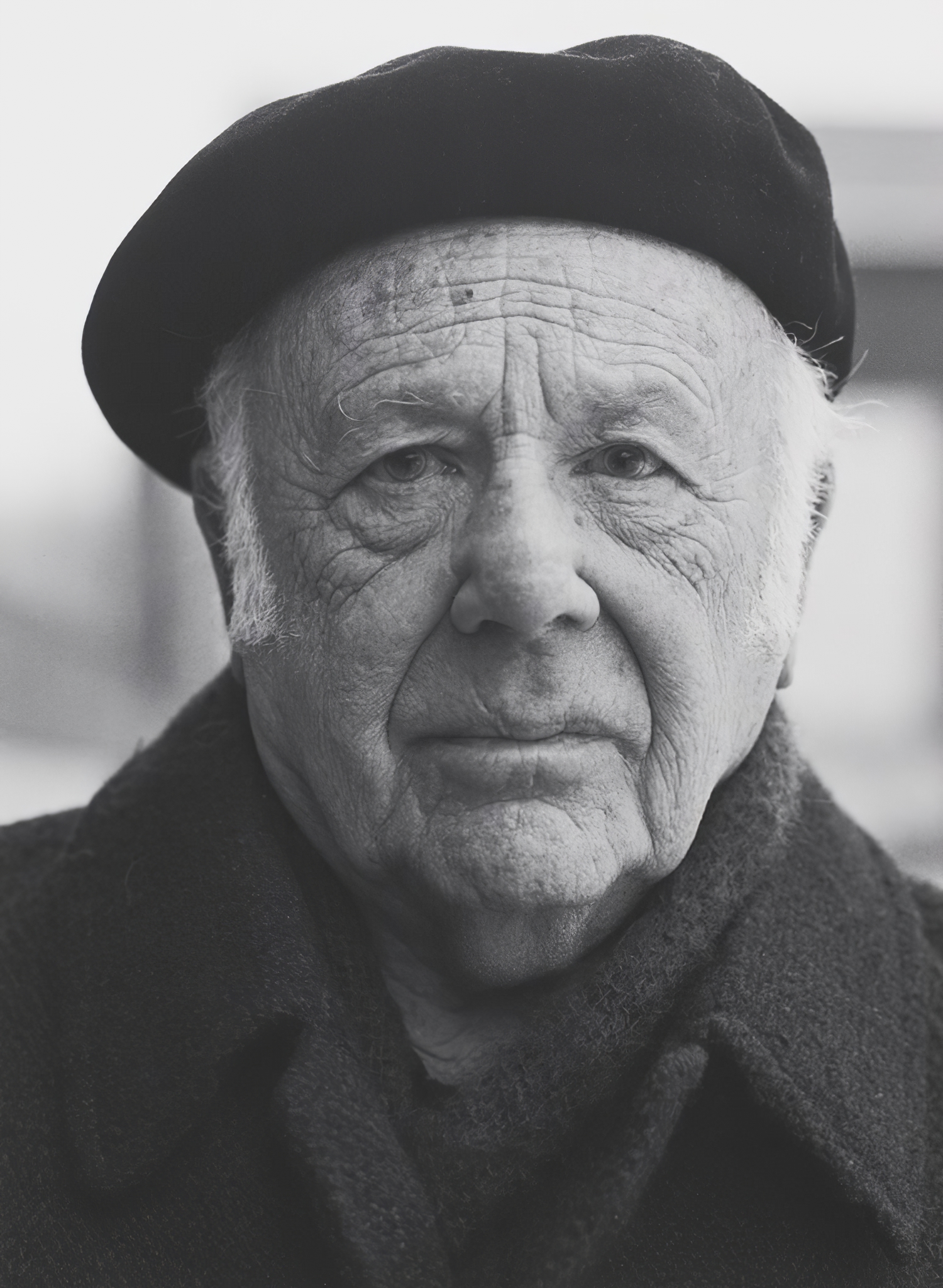
Paul Strand was an American photographer and filmmaker who, along with fellow modernist photographers like Alfred Stieglitz and Edward Weston, helped establish photography as an art form in the 20th century. In 1936, he helped found the Photo League, a cooperative of photographers who banded together around a range of common social and creative causes. His diverse body of work, spanning six decades, covers numerous genres and subjects throughout the Americas, Europe, and Africa.

Paul Strand was an American photographer and filmmaker who, along with fellow modernist photographers like Alfred Stieglitz and Edward Weston, helped establish photography as an art form in the 20th century. In 1936, he helped found the Photo League, a cooperative of photographers who banded together around a range of common social and creative causes. His diverse body of work, spanning six decades, covers numerous genres and subjects throughout the Americas, Europe, and Africa.
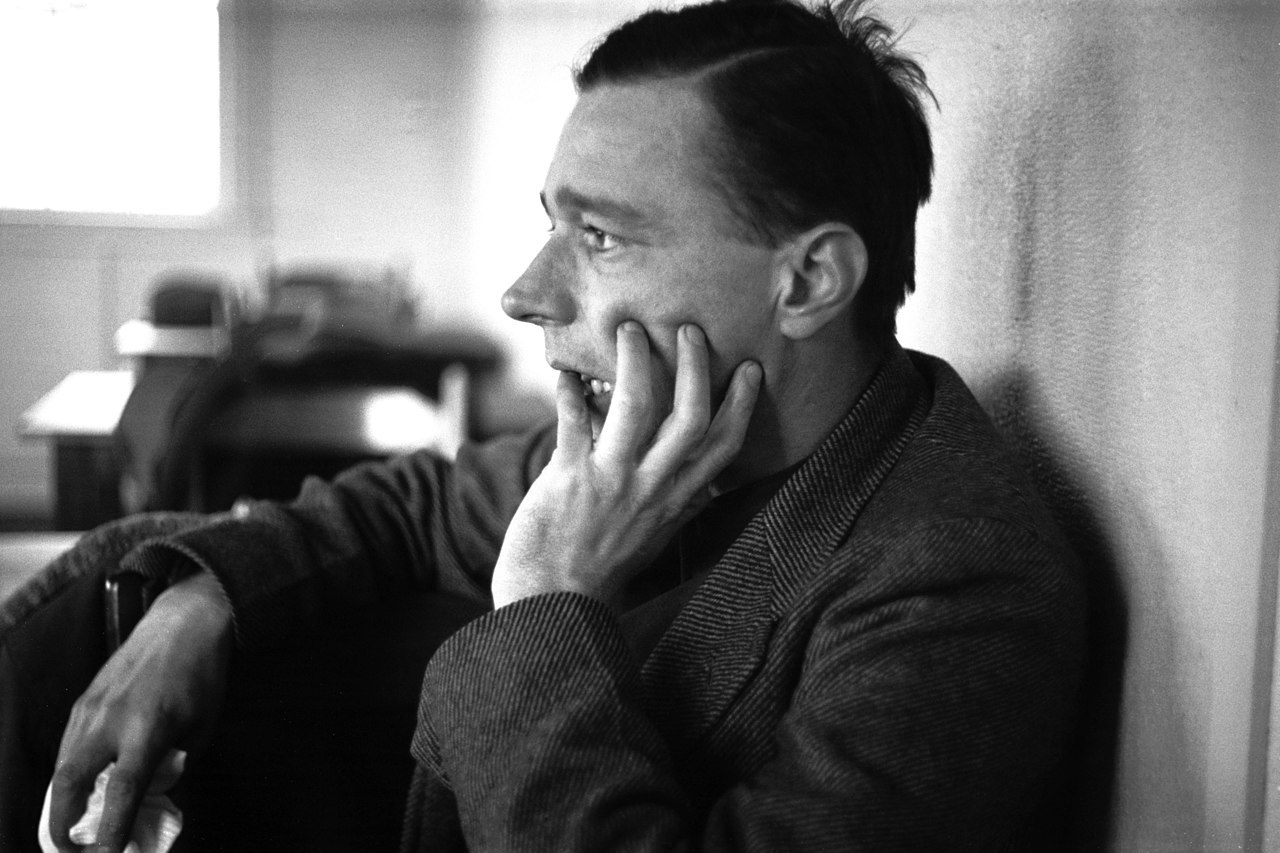
Walker Evans was an American photographer and photojournalist best known for his work for the Farm Security Administration (FSA) documenting the effects of the Great Depression. Much of Evans' work from the FSA period uses the large-format, 8×10-inch (200×250 mm) view camera. He said that his goal as a photographer was to make pictures that are "literate, authoritative, transcendent".
Many of his works are in the permanent collections of museums and have been the subject of retrospectives at such institutions as the Metropolitan Museum of Art or the George Eastman Museum.
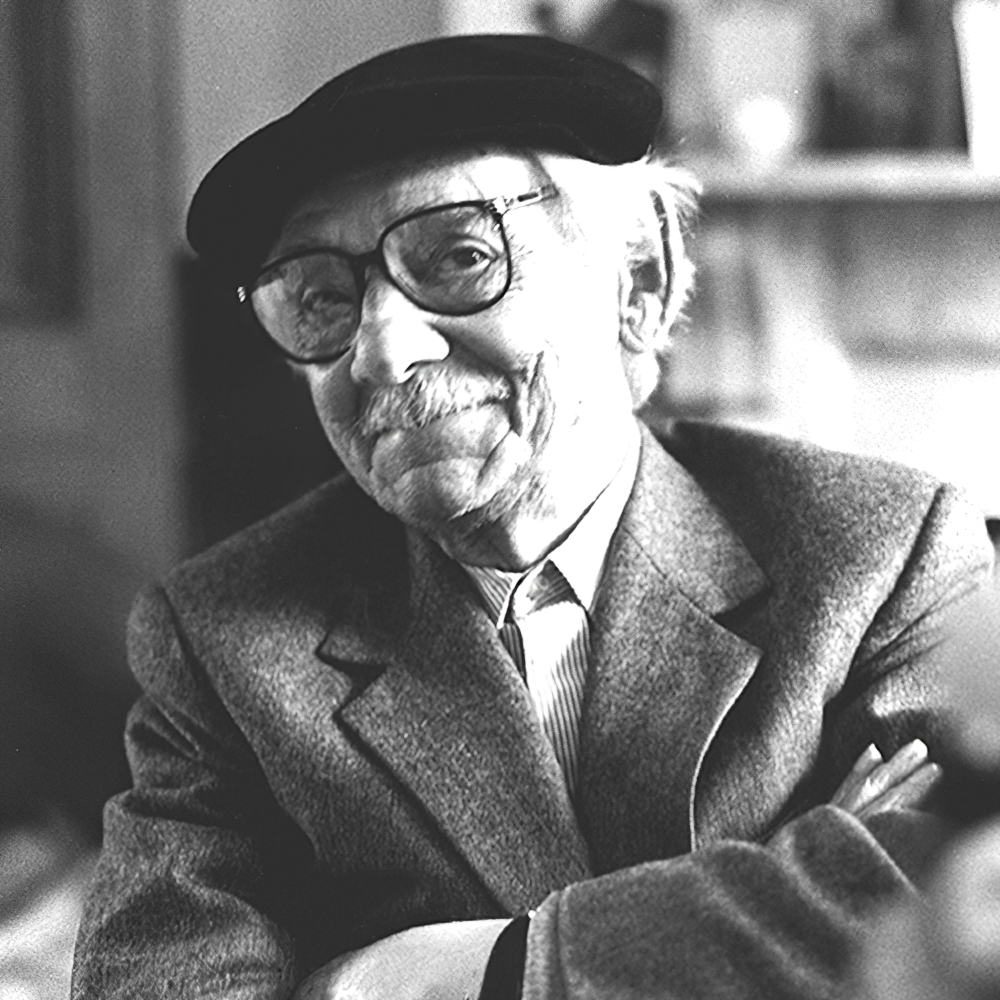
Manuel Álvarez Bravo was an Mexican visionary photographer whose work vividly illustrates the cultural heritage of Latin America. His unique perspective on life and superb photographic skills have inspired generations of photographers around the world.
Alvarez Bravo was known for his experiments with light and shadows, composition and form. His surreal photographs were often full of mystery and enigma, while also reflecting the difficulties and contradictions of Mexican society in the first half of the 20th century.
Alvarez Bravo's work marvellously combined aesthetic beauty with profound social context. His work is not only inspiring in its beauty but also a reminder of the importance of preserving peoples' cultural heritage and history.

Paul Strand was an American photographer and filmmaker who, along with fellow modernist photographers like Alfred Stieglitz and Edward Weston, helped establish photography as an art form in the 20th century. In 1936, he helped found the Photo League, a cooperative of photographers who banded together around a range of common social and creative causes. His diverse body of work, spanning six decades, covers numerous genres and subjects throughout the Americas, Europe, and Africa.
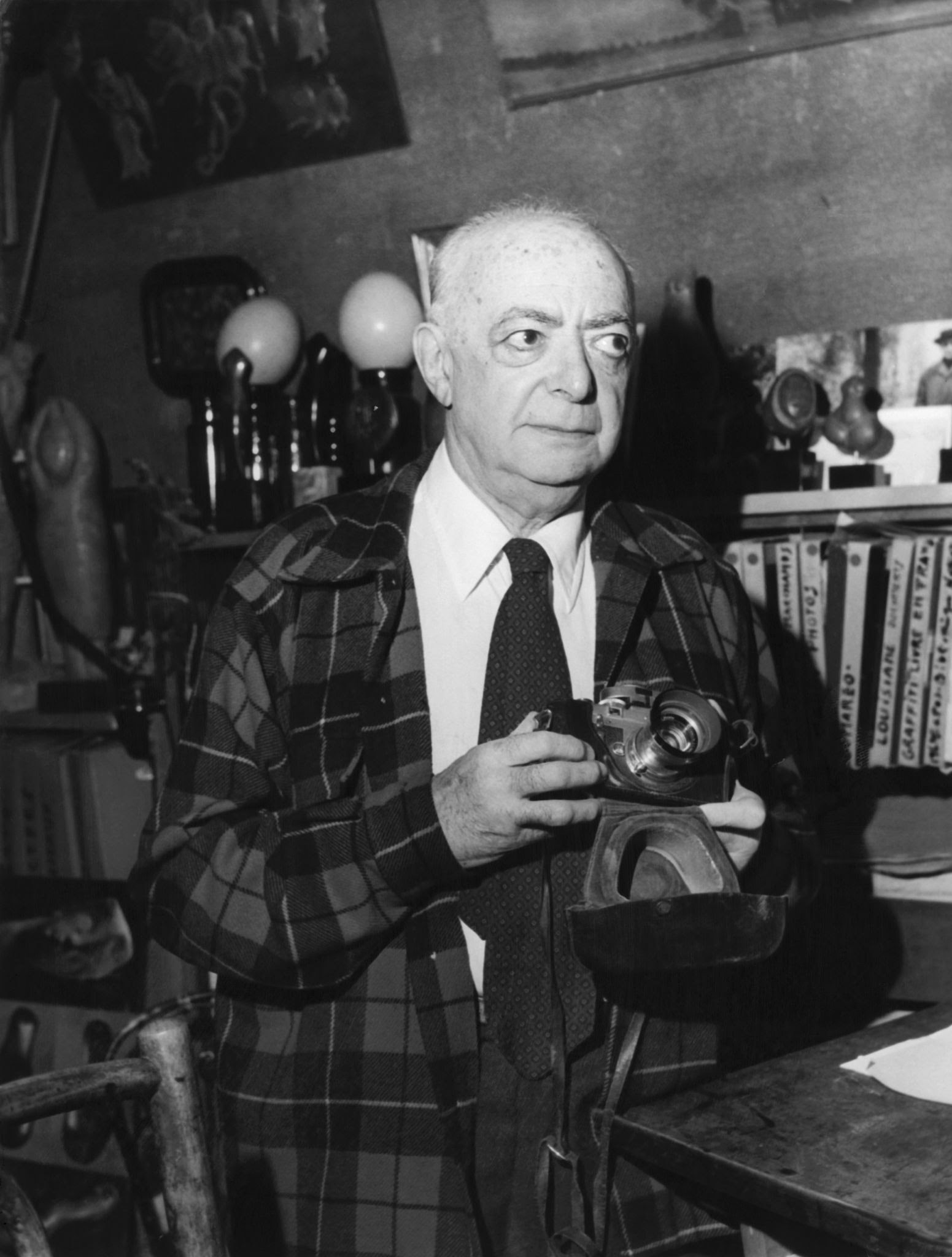
Brassaï, whose real name was Gyula Halász, was a Hungarian-French artist and photographer best known for his work documenting the streets of Paris during the 1920s and 1930s. He was one of the key figures of the Surrealist movement and his work continues to influence photographers and artists to this day.
Brassaï moved to Paris in the 1920s to pursue a career in art. He initially worked as a journalist and began taking photographs to accompany his articles. However, it was his nocturnal photographs of the city that would bring him international fame.
Brassaï's photographs of the streets of Paris at night captured the city's seedier side, including its prostitutes, bars, and cabarets. His work is known for its use of dramatic lighting and strong contrast, which helped to create a moody, evocative atmosphere.
In addition to his photography, Brassaï was also a talented painter and sculptor. He was a close friend of many of the leading artists and writers of the time, including Pablo Picasso, Salvador Dalí, and Henry Miller.
Brassaï's work has been exhibited in major museums and galleries around the world, and his photographs have been published in numerous books and magazines. He was one of the most influential photographers of the 20th century, and his legacy continues to inspire artists and photographers today.
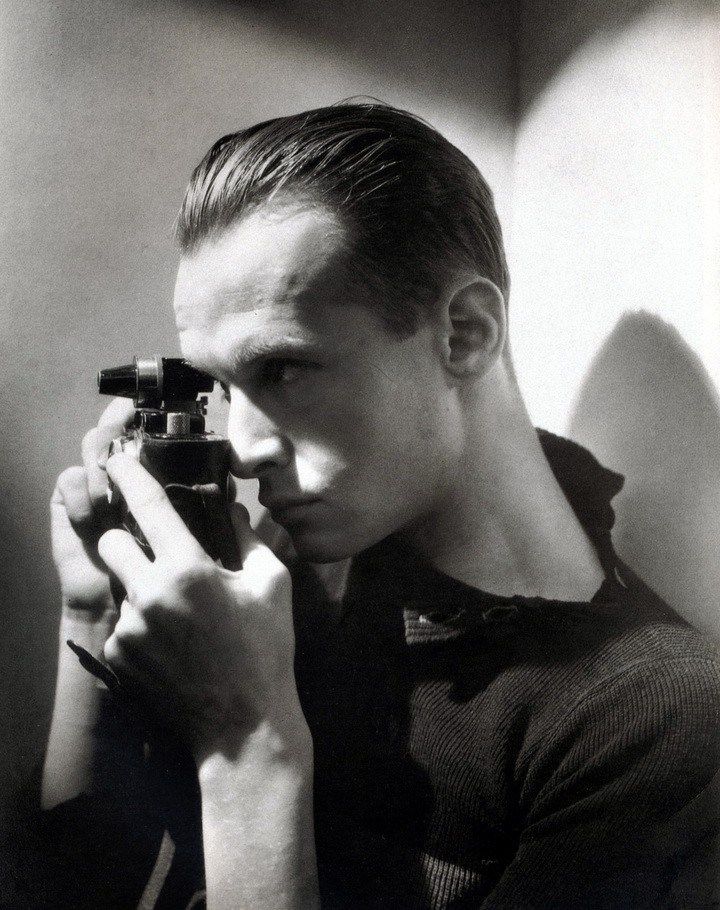
Baron George Hoyningen-Huene was a fashion photographer of the 1920s and 1930s. He was born in the Russian Empire to Baltic German and American parents and spent his working life in France, England and the United States.
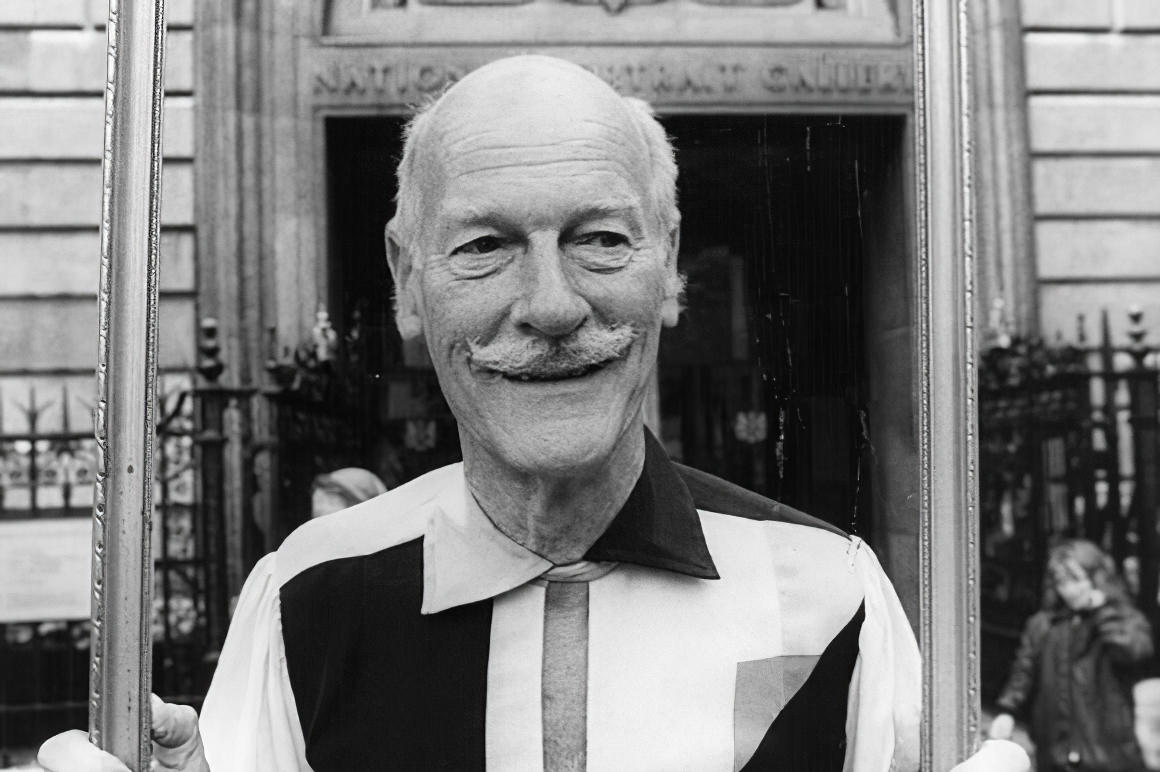
Norman Parkinson was a renowned British photographer who is considered one of the most influential fashion photographers of the 20th century. Parkinson began his career in the 1930s and continued to work until his death.
Throughout his career, Parkinson worked for numerous fashion magazines, including Vogue, Harper's Bazaar, and Queen. He was known for his use of vibrant colors and his ability to capture his subjects in dynamic poses and interesting settings. Parkinson's photographs often had a sense of humor and playfulness, and he was known for his ability to put his models at ease, resulting in natural and spontaneous photographs.
Parkinson's work has been exhibited in galleries and museums around the world, and he has been the subject of numerous books and documentaries. He received numerous awards throughout his career, including the Royal Photographic Society's Centenary Medal in 1985.
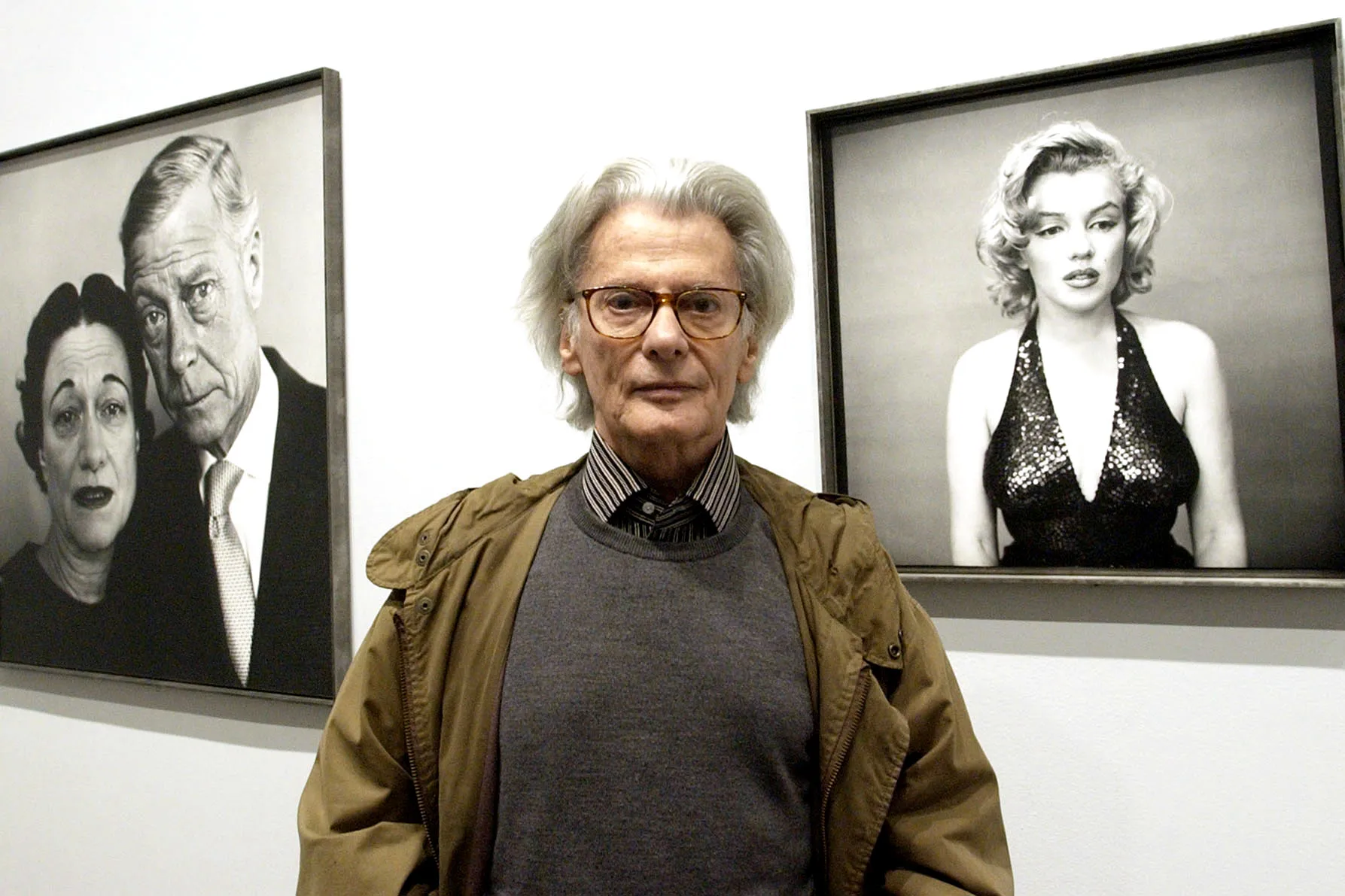
Richard Avedon was an American photographer and artist known for his iconic portraits and fashion photography.
Avedon began his career as a photographer in the late 1940s, working as a freelance photographer for magazines such as Harper's Bazaar and Vogue. He soon became known for his distinctive style, which was characterized by his use of simple, uncluttered backgrounds and his ability to capture the essence of his subjects.
Throughout his career, Avedon photographed some of the most famous people of his time, including Marilyn Monroe, Andy Warhol, and The Beatles. He was also known for his fashion photography, and his work appeared in many fashion magazines, including Harper's Bazaar and Vogue.
Avedon's work was often controversial, as he challenged traditional notions of beauty and fashion. He was known for his willingness to push boundaries, and his work was often seen as a reflection of the social and political issues of his time.
Today, Avedon is regarded as one of the most important photographers of the 20th century, and his work continues to inspire artists and photographers around the world.
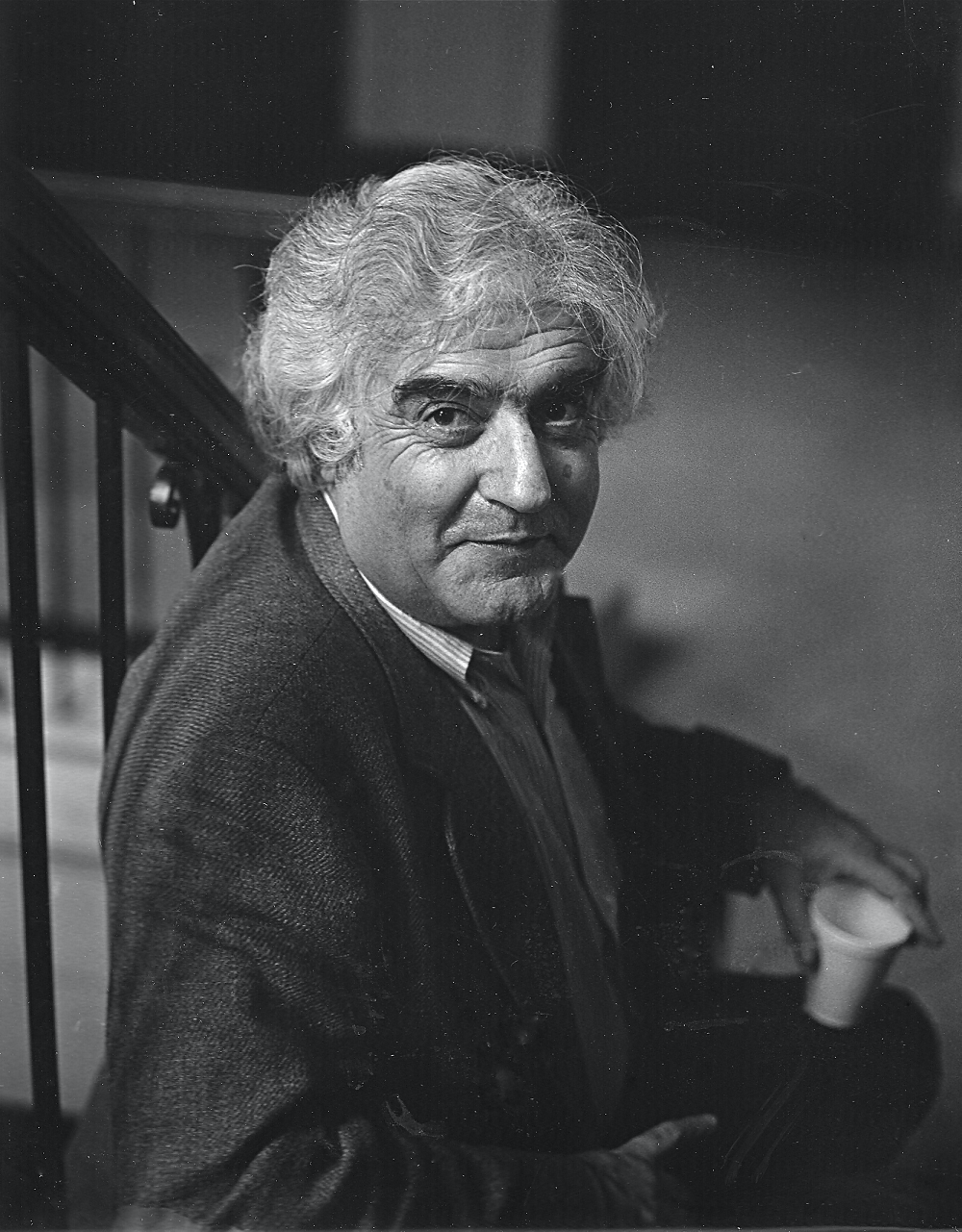
Cornell Capa is an American photographer, photojournalist and founder of the International Center of Photography (ICP) in New York, the younger brother of the famous war correspondent Robert Capa.
Cornell Capa was known for his humanistic approach to photography, often capturing the lives and struggles of ordinary people. Throughout his career, he covered many important events, including the Spanish Civil War, World War II and the Vietnam War. Capa also photographed many famous people including John F. Kennedy, Marilyn Monroe and Pablo Picasso.
In 1974, Cornell Capa founded ICP, which has since become one of the world's leading photography education and exhibition institutions. The ICP's mission is to promote the understanding and appreciation of photography as an art form as well as a means of communication and social change.
Throughout his career Capa has received numerous awards and honours, including the National Medal of Arts in 1988. His photographs continue to be exhibited in galleries and museums around the world and his legacy lives on through ICP.
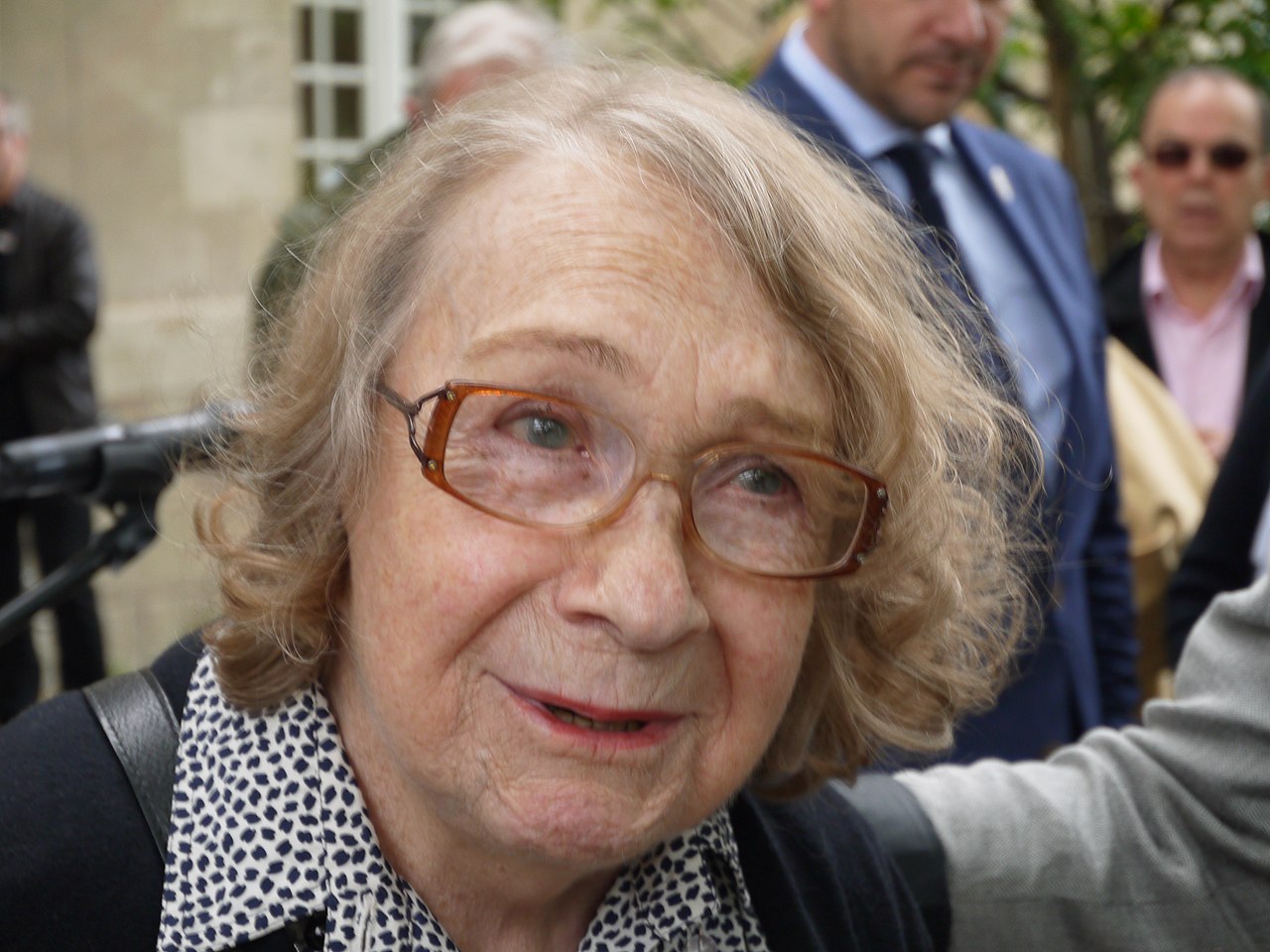
Sabine Weiss is a Swiss artist and photographer who became known for her street photography and portraits. In 1942 she moved to Zurich to study photography with Hans Finsler, where she met her future husband, the American artist Hugh Weiss.
After the Second World War, Weiss moved to Paris and began working as a freelance photographer. She became associated with the humanist photography movement, which sought to capture the daily lives of people in cities. Weiss' photographs often focused on working class neighbourhoods, street scenes and children's lives. Her photographs were known for their sensitivity and empathy as well as her strong sense of composition and use of light.
Weiss's work was exhibited widely throughout her life and she received numerous awards and prizes, including the Niepce Prize in 1955 and the Grand Prix National Photography Award in 1995. Her photographs have been collected by major museums and institutions around the world, including the Museum of Modern Art in New York, the Victoria and Albert Museum in London and the Bibliothèque Nationale de France in Paris.
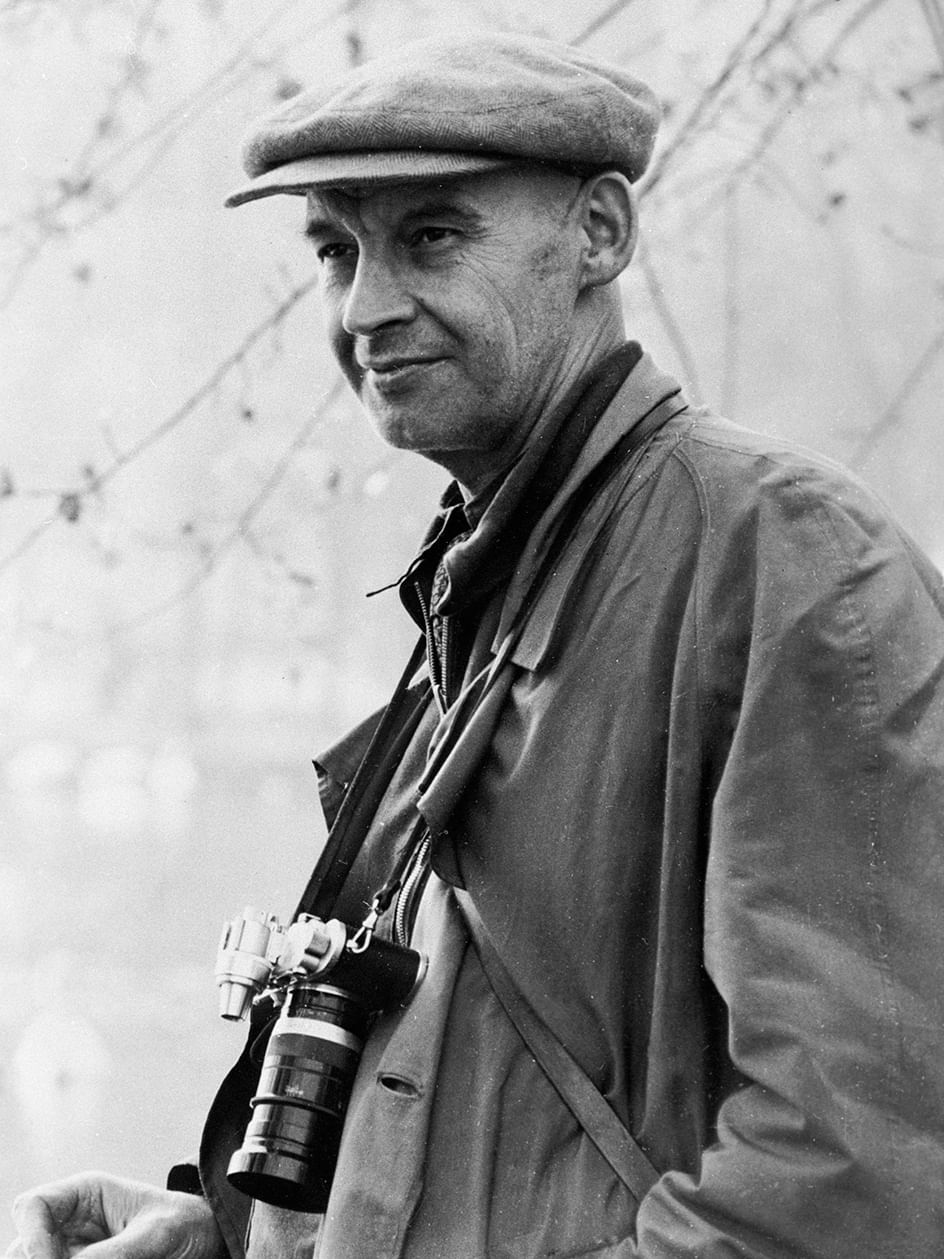
Aleksander Mikhailovich Rodchenko (Russian: Александр Михайлович Родченко) was a pivotal figure in the avant-garde movement of Russian art, whose innovative work spanned painting, sculpture, photography, and graphic design. Born in Saint Petersburg in 1891, Rodchenko emerged as a leading artist in the early 20th century, deeply influenced by the cultural upheavals of his time. His commitment to experimentation and his pursuit of new artistic forms and methods made him a central figure in the development of Constructivism, a movement that sought to apply art to practical and social purposes.
Rodchenko's art is characterized by its bold experimentation with perspective, form, and color. His photographic work, in particular, showcased his fascination with unusual viewpoints and his ability to transform ordinary subjects into dynamic compositions. This approach not only redefined photographic practice but also reflected his belief in the artist's role in constructing a new visual environment. Among his most recognized works are his series of abstract paintings, his design for the poster "Books (Please)! In All Branches of Knowledge," and his groundbreaking photography, which continues to influence artists today.
Rodchenko's contributions to art and design extend beyond his own creations. He was an influential teacher at the Higher Technical-Artistic Studios (VKhUTEMAS), a hotbed for avant-garde ideas and practices. His works are held in major museums and galleries worldwide, including the Museum of Modern Art in New York and the State Tretyakov Gallery in Moscow, testament to his enduring legacy in the art world.
For collectors and experts in art and antiques, Rodchenko's work offers a fascinating insight into the revolutionary spirit of early 20th-century Russian art. His innovative approach to form, combined with his commitment to using art as a tool for social change, makes his work highly sought after and continually relevant.
To stay informed about new product sales and auction events related to Aleksander Mikhailovich Rodchenko, sign up for our updates. This subscription is your gateway to the latest in the world of art collecting, ensuring you don't miss out on acquiring pieces from one of the avant-garde's most influential figures.
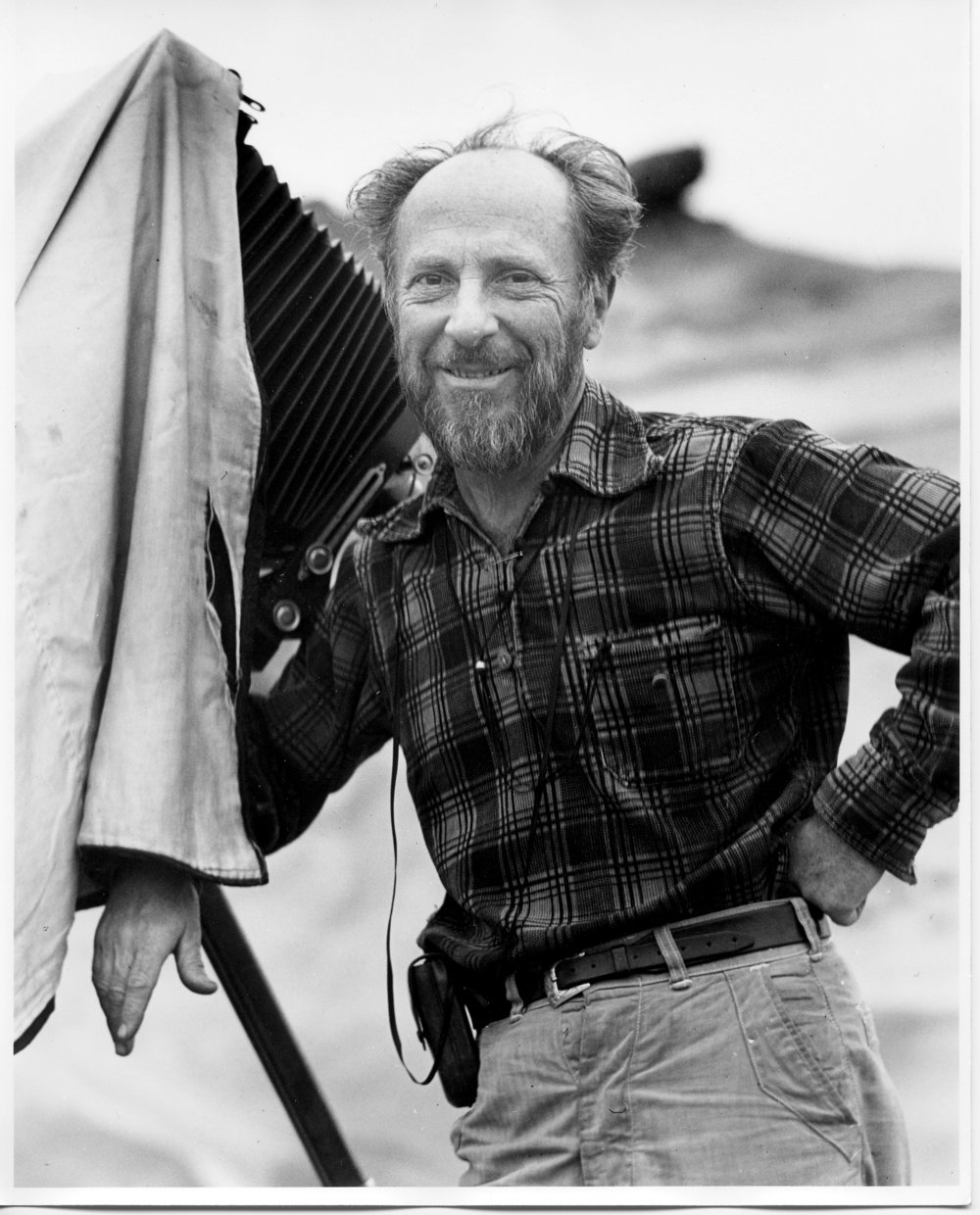
Edward Henry Weston, an American photographer, emerged as a significant figure in early to mid-20th-century photography, renowned for his meticulously composed, sharply focused images that spanned natural forms, landscapes, and nudes. His journey into photography began at a young age, receiving his first camera at 16 and eventually shaping a career that challenged and transformed the medium's artistic scope.
Edward Weston's move to California marked a pivotal shift in his career, where his interactions with other artists and his explorations of nature led to a distinct style characterized by its precision and emphasis on the intrinsic beauty of his subjects. His time in Mexico was particularly transformative, influencing his artistic direction significantly through encounters with key figures of the Mexican Renaissance and his introspective work that focused on detail and form.
Throughout his career, Edward Weston's work underwent several evolutions, moving from Pictorialism to a more direct and detailed approach, culminating in his involvement with the f/64 group, which advocated for photography that emphasized clarity and depth. His dedication to capturing the essence of his subjects without manipulation set new standards in the field, inspiring generations of photographers.
Weston's legacy is celebrated in numerous retrospectives and his influence continues in modern photography, with his works residing in prestigious institutions and collections worldwide. His deep connection to nature and commitment to photographic purity remain enduring aspects of his contribution to the art form.
For art collectors and enthusiasts, Edward Weston's work represents a fascinating intersection of artistic innovation and profound respect for the natural world, making his photographs coveted pieces in the realms of art and antiques. To stay updated on sales and auctions related to Edward Weston's work, subscribing for updates is a prudent step to ensure you remain informed about opportunities to acquire pieces connected to this influential artist.
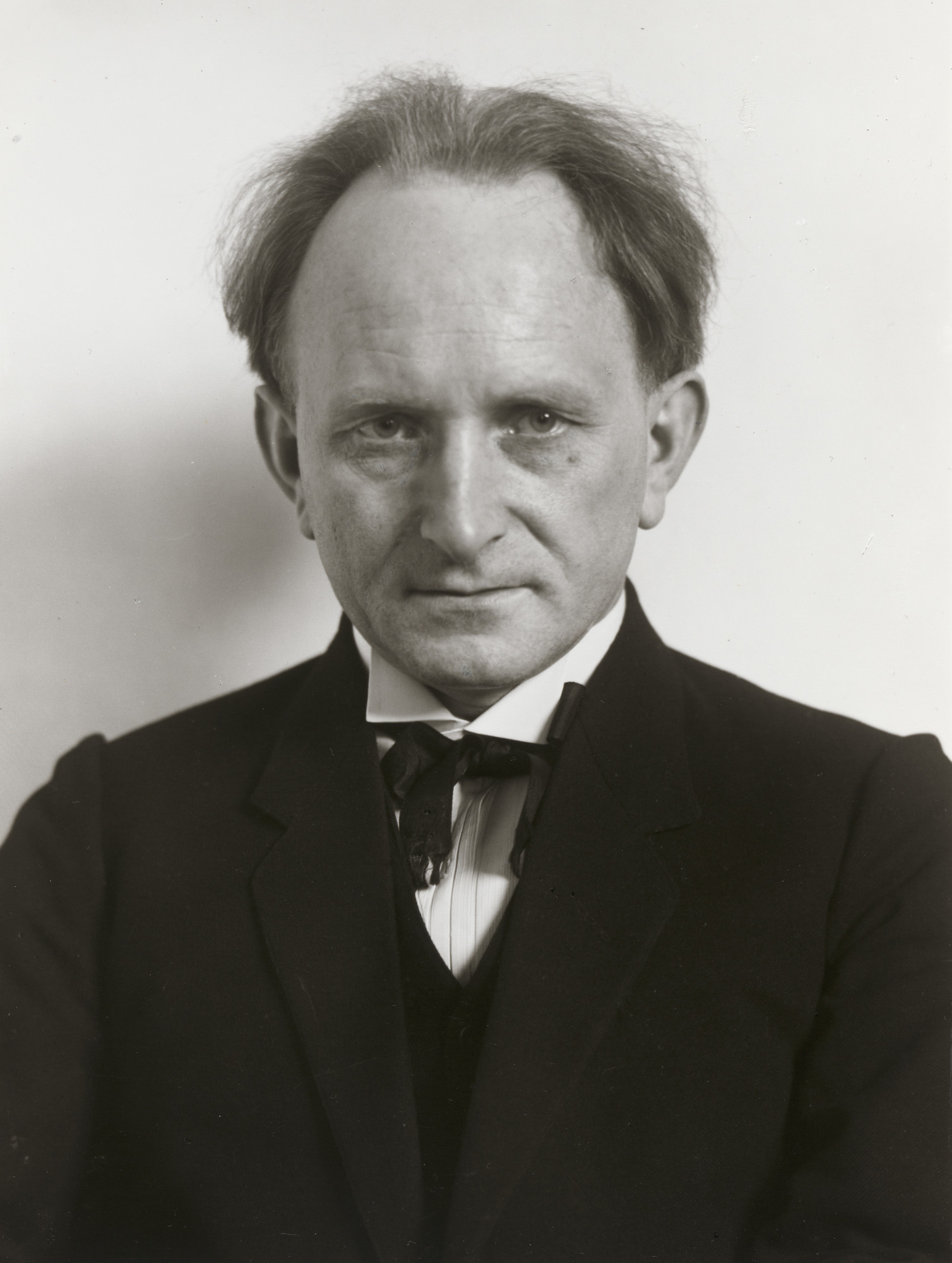
August Sander was a German portrait and documentary photographer. Sander's first book Face of our Time (German: Antlitz der Zeit) was published in 1929. Sander has been described as "the most important German portrait photographer of the early twentieth century".
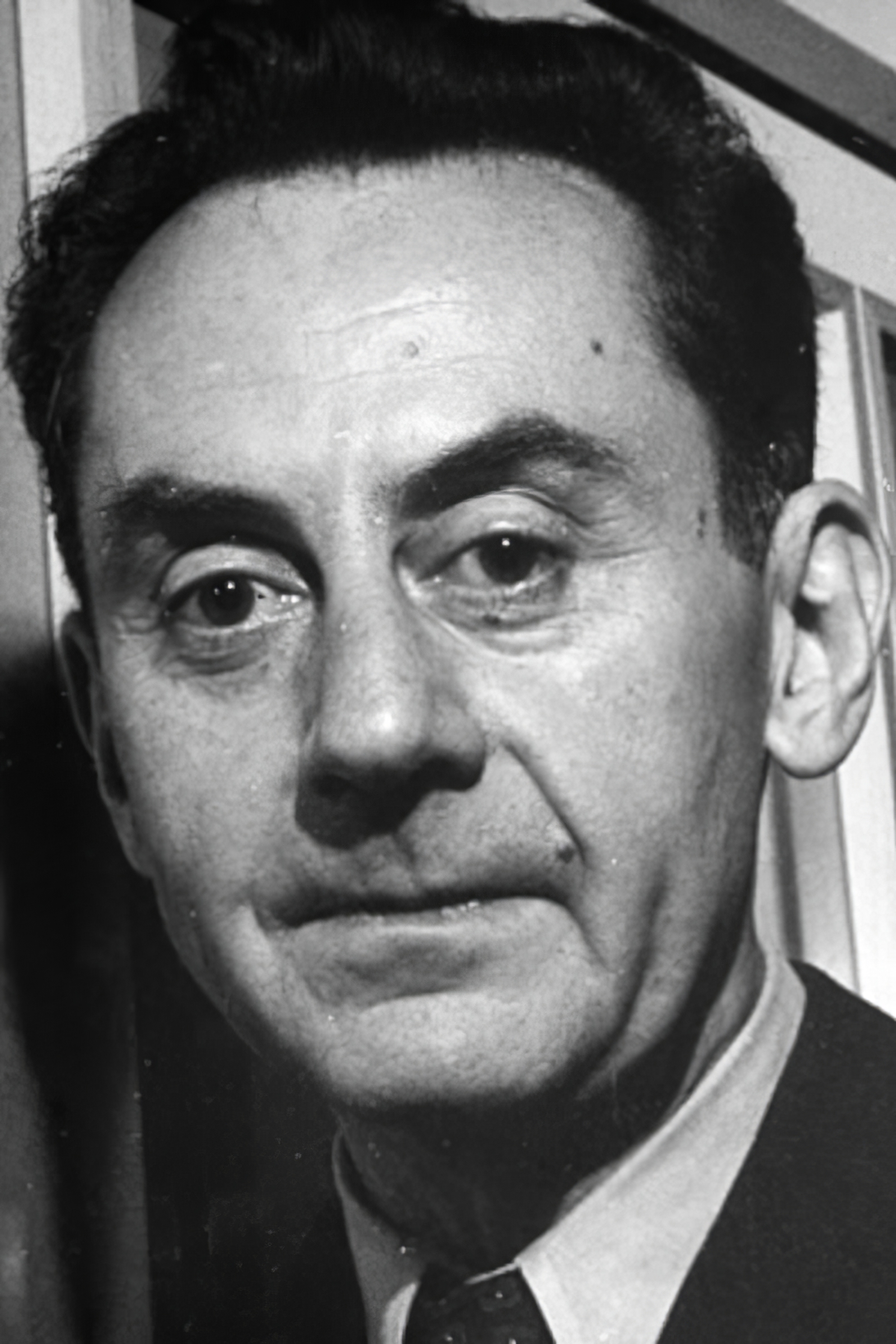
Man Ray, born Emmanuel Radnitzky, was an American visual artist who played a significant role in the Dada and Surrealist movements. His pioneering efforts in photography, alongside his work in painting and sculpture, have cemented his place as a major figure in modern art. Known for his innovative techniques and the ability to convey complex ideas through simple, striking visuals, Man Ray's contribution to the art world is profound.
Throughout his career, Man Ray was celebrated for his avant-garde approach and his ability to transcend traditional boundaries between different artistic mediums. His photography, characterized by experimental techniques such as solarization and rayographs (cameraless photographs), challenged conventional perceptions of photography as merely a means of representation. These artistic innovations made him a central figure in both Parisian and American art circles.
Man Ray's works are housed in some of the world's most prestigious museums and galleries, including the Museum of Modern Art in New York and the Centre Pompidou in Paris. His pieces, such as "Le Violon d'Ingres" and "Noire et Blanche," are iconic images that continue to influence artists today. His ability to blend the abstract with the realistic, and the humorous with the serious, has left a lasting legacy in the world of art.
For collectors and experts in art and antiques, the work of Man Ray offers a glimpse into the revolutionary changes that shaped the visual arts in the 20th century. His unique perspective and pioneering techniques continue to inspire and challenge those interested in the boundaries of creativity and expression.
If you're passionate about the avant-garde, or simply wish to explore the fascinating world of Man Ray further, sign up for our updates. You'll receive alerts on new product sales and auction events related to Man Ray, ensuring you never miss an opportunity to engage with the legacy of this extraordinary artist.

Margaret Bourke-White was an American photographer and photojournalist. She studied photography at the Clarence H. White School of Photography. White, where she developed her trademark style using dramatic angles and strong contrasts of light and shadow.
Burke-White was one of the first women photographers to work for Life magazine, and her images became synonymous with the magazine's coverage of major world events such as World War II and the Korean War. She was also the first woman photographer to work in war zones during World War II, where she captured powerful images of warfare and its impact on civilians.
In addition to war photography, Bourke-White also documented the Great Depression in the United States and was one of the few photographers to gain access to the Soviet Union in the 1930s where she documented Soviet industrialization and the lives of ordinary people.
Bourke-White's work was known for its powerful impact and stark realism. She often risked her safety to get the perfect shot and her images continue to inspire photographers today. She published several books of her work, including 'Eyes on Russia' and 'Dear Fatherland, Rest in Peace'.
Bourke-White left behind a legacy as one of the greatest photojournalists of the 20th century.
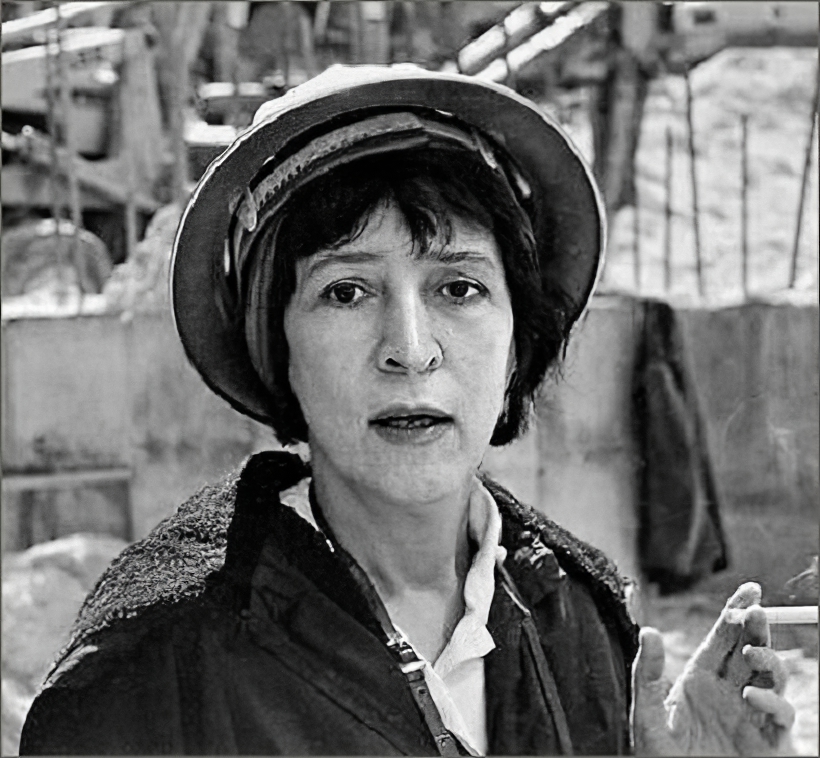
Helen Levitt was an American photographer known for her street photography of New York City. Levitt began taking photographs as a teenager and went on to work for the photo agency, the Photo League, in the 1930s and 1940s.
Levitt's work focused on capturing the daily lives of ordinary people, particularly children, in the neighborhoods of New York City. She used a small 35mm camera to take candid shots of children playing in the streets, creating images that were both playful and poignant. Her work was often compared to the work of fellow street photographers, such as Henri Cartier-Bresson and Walker Evans.
In addition to her photography, Levitt also worked as a filmmaker and created several acclaimed documentaries.
Levitt's photographs have been exhibited in major museums around the world, including the Museum of Modern Art in New York and the San Francisco Museum of Modern Art. She was awarded numerous honors for her work, including a Guggenheim Fellowship and a National Endowment for the Arts Grant.
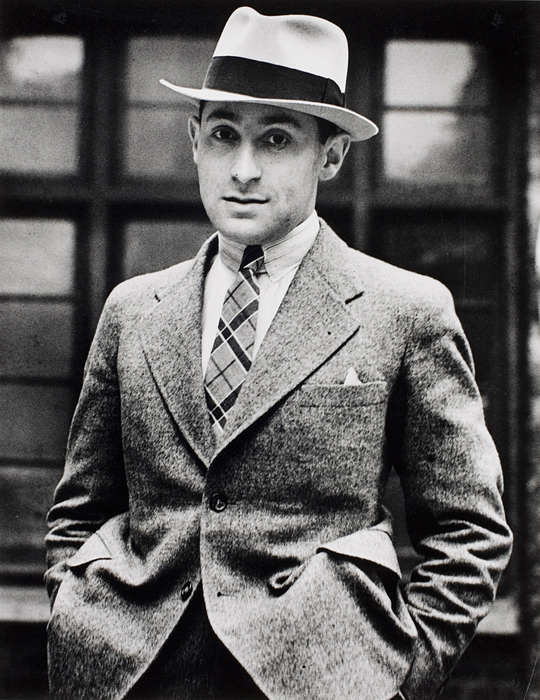
Alfred Eisenstaedt was a German-born American photographer and photojournalist. He is best known for his work as a staff photographer for Life magazine, where he captured iconic images of celebrities, politicians, and everyday people.
Eisenstaedt began his career as a photographer in Germany, working for the Pacific and Atlantic Photos agency in Berlin in the 1920s. He emigrated to the United States in 1935 and joined the staff of Life magazine in 1936, where he remained until the magazine ceased publication in 1972.
Eisenstaedt's images are notable for their candid, spontaneous feel and their ability to capture the essence of his subjects. He is perhaps best known for his photograph "V-J Day in Times Square," which depicts a sailor kissing a nurse in celebration of the end of World War II. The image has become one of the most iconic photographs of the 20th century.
Throughout his career, Eisenstaedt photographed many of the most famous and influential people of his time, including Marilyn Monroe, Albert Einstein, Winston Churchill, and John F. Kennedy. His work has been exhibited in major museums around the world, and he received numerous awards and honors for his contributions to the field of photography.
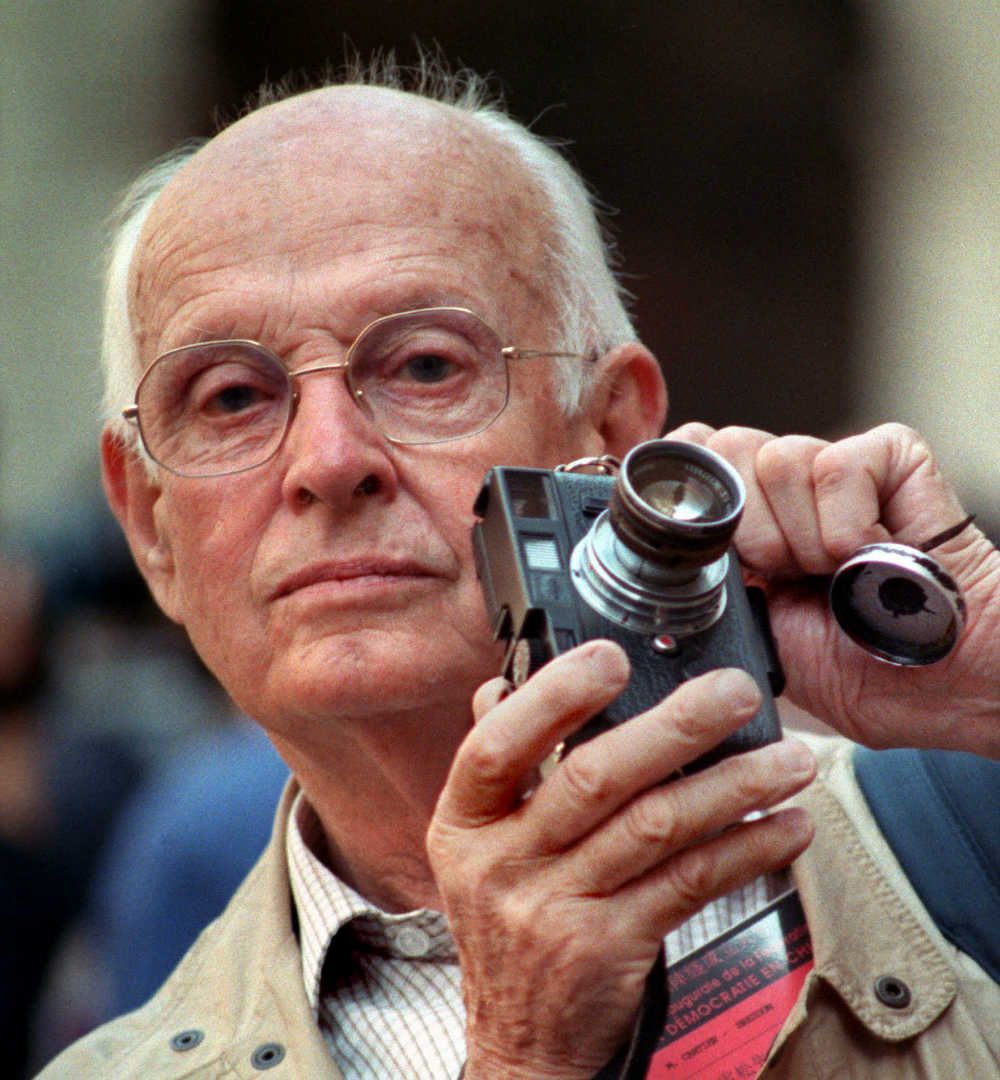
Henri Cartier-Bresson was a French artist renowned for his groundbreaking work in photography, particularly in the realms of photojournalism and street photography. Born on August 22, 1908, in Chanteloup, France, Cartier-Bresson's early artistic endeavors were in painting, which he began studying at the age of five. His transition to photography was marked by his adoption of a 35mm Leica camera in 1931, a tool that became synonymous with his work.
Henri Cartier-Bresson's photography is celebrated for its unique blend of spontaneity and composition, capturing moments that reveal deeper truths about their subjects. His theory of "the decisive moment" – that is, capturing an event that is ephemeral and spontaneous, yet significant – has had a profound influence on the field of photography. His work has been exhibited in prestigious venues such as the Museum of Modern Art in New York and is held in high esteem in art collections worldwide.
In addition to his personal achievements, Henri Cartier-Bresson was a co-founder of Magnum Photos in 1947, a cooperative agency for worldwide photographers that significantly influenced photojournalism. Later in his career, Cartier-Bresson returned to painting and drawing, demonstrating his lifelong commitment to the arts.
For art collectors and experts, Henri Cartier-Bresson's work offers a pivotal exploration of 20th-century photography, blending artistic vision with the unguarded moments of life. His influence extends beyond his images, shaping the way we perceive and engage with visual narratives.
To explore more about Henri Cartier-Bresson's influential career and works, and to stay updated on exhibitions or sales featuring his photography, you might consider subscribing to updates from art institutions or galleries that frequently showcase his work.

Henri Cartier-Bresson was a French artist renowned for his groundbreaking work in photography, particularly in the realms of photojournalism and street photography. Born on August 22, 1908, in Chanteloup, France, Cartier-Bresson's early artistic endeavors were in painting, which he began studying at the age of five. His transition to photography was marked by his adoption of a 35mm Leica camera in 1931, a tool that became synonymous with his work.
Henri Cartier-Bresson's photography is celebrated for its unique blend of spontaneity and composition, capturing moments that reveal deeper truths about their subjects. His theory of "the decisive moment" – that is, capturing an event that is ephemeral and spontaneous, yet significant – has had a profound influence on the field of photography. His work has been exhibited in prestigious venues such as the Museum of Modern Art in New York and is held in high esteem in art collections worldwide.
In addition to his personal achievements, Henri Cartier-Bresson was a co-founder of Magnum Photos in 1947, a cooperative agency for worldwide photographers that significantly influenced photojournalism. Later in his career, Cartier-Bresson returned to painting and drawing, demonstrating his lifelong commitment to the arts.
For art collectors and experts, Henri Cartier-Bresson's work offers a pivotal exploration of 20th-century photography, blending artistic vision with the unguarded moments of life. His influence extends beyond his images, shaping the way we perceive and engage with visual narratives.
To explore more about Henri Cartier-Bresson's influential career and works, and to stay updated on exhibitions or sales featuring his photography, you might consider subscribing to updates from art institutions or galleries that frequently showcase his work.

Henri Cartier-Bresson was a French artist renowned for his groundbreaking work in photography, particularly in the realms of photojournalism and street photography. Born on August 22, 1908, in Chanteloup, France, Cartier-Bresson's early artistic endeavors were in painting, which he began studying at the age of five. His transition to photography was marked by his adoption of a 35mm Leica camera in 1931, a tool that became synonymous with his work.
Henri Cartier-Bresson's photography is celebrated for its unique blend of spontaneity and composition, capturing moments that reveal deeper truths about their subjects. His theory of "the decisive moment" – that is, capturing an event that is ephemeral and spontaneous, yet significant – has had a profound influence on the field of photography. His work has been exhibited in prestigious venues such as the Museum of Modern Art in New York and is held in high esteem in art collections worldwide.
In addition to his personal achievements, Henri Cartier-Bresson was a co-founder of Magnum Photos in 1947, a cooperative agency for worldwide photographers that significantly influenced photojournalism. Later in his career, Cartier-Bresson returned to painting and drawing, demonstrating his lifelong commitment to the arts.
For art collectors and experts, Henri Cartier-Bresson's work offers a pivotal exploration of 20th-century photography, blending artistic vision with the unguarded moments of life. His influence extends beyond his images, shaping the way we perceive and engage with visual narratives.
To explore more about Henri Cartier-Bresson's influential career and works, and to stay updated on exhibitions or sales featuring his photography, you might consider subscribing to updates from art institutions or galleries that frequently showcase his work.

Henri Cartier-Bresson was a French artist renowned for his groundbreaking work in photography, particularly in the realms of photojournalism and street photography. Born on August 22, 1908, in Chanteloup, France, Cartier-Bresson's early artistic endeavors were in painting, which he began studying at the age of five. His transition to photography was marked by his adoption of a 35mm Leica camera in 1931, a tool that became synonymous with his work.
Henri Cartier-Bresson's photography is celebrated for its unique blend of spontaneity and composition, capturing moments that reveal deeper truths about their subjects. His theory of "the decisive moment" – that is, capturing an event that is ephemeral and spontaneous, yet significant – has had a profound influence on the field of photography. His work has been exhibited in prestigious venues such as the Museum of Modern Art in New York and is held in high esteem in art collections worldwide.
In addition to his personal achievements, Henri Cartier-Bresson was a co-founder of Magnum Photos in 1947, a cooperative agency for worldwide photographers that significantly influenced photojournalism. Later in his career, Cartier-Bresson returned to painting and drawing, demonstrating his lifelong commitment to the arts.
For art collectors and experts, Henri Cartier-Bresson's work offers a pivotal exploration of 20th-century photography, blending artistic vision with the unguarded moments of life. His influence extends beyond his images, shaping the way we perceive and engage with visual narratives.
To explore more about Henri Cartier-Bresson's influential career and works, and to stay updated on exhibitions or sales featuring his photography, you might consider subscribing to updates from art institutions or galleries that frequently showcase his work.

Henri Cartier-Bresson was a French artist renowned for his groundbreaking work in photography, particularly in the realms of photojournalism and street photography. Born on August 22, 1908, in Chanteloup, France, Cartier-Bresson's early artistic endeavors were in painting, which he began studying at the age of five. His transition to photography was marked by his adoption of a 35mm Leica camera in 1931, a tool that became synonymous with his work.
Henri Cartier-Bresson's photography is celebrated for its unique blend of spontaneity and composition, capturing moments that reveal deeper truths about their subjects. His theory of "the decisive moment" – that is, capturing an event that is ephemeral and spontaneous, yet significant – has had a profound influence on the field of photography. His work has been exhibited in prestigious venues such as the Museum of Modern Art in New York and is held in high esteem in art collections worldwide.
In addition to his personal achievements, Henri Cartier-Bresson was a co-founder of Magnum Photos in 1947, a cooperative agency for worldwide photographers that significantly influenced photojournalism. Later in his career, Cartier-Bresson returned to painting and drawing, demonstrating his lifelong commitment to the arts.
For art collectors and experts, Henri Cartier-Bresson's work offers a pivotal exploration of 20th-century photography, blending artistic vision with the unguarded moments of life. His influence extends beyond his images, shaping the way we perceive and engage with visual narratives.
To explore more about Henri Cartier-Bresson's influential career and works, and to stay updated on exhibitions or sales featuring his photography, you might consider subscribing to updates from art institutions or galleries that frequently showcase his work.


